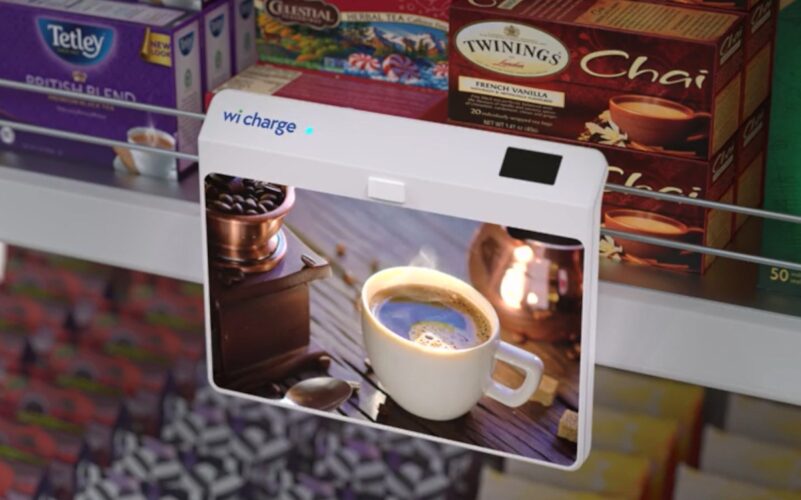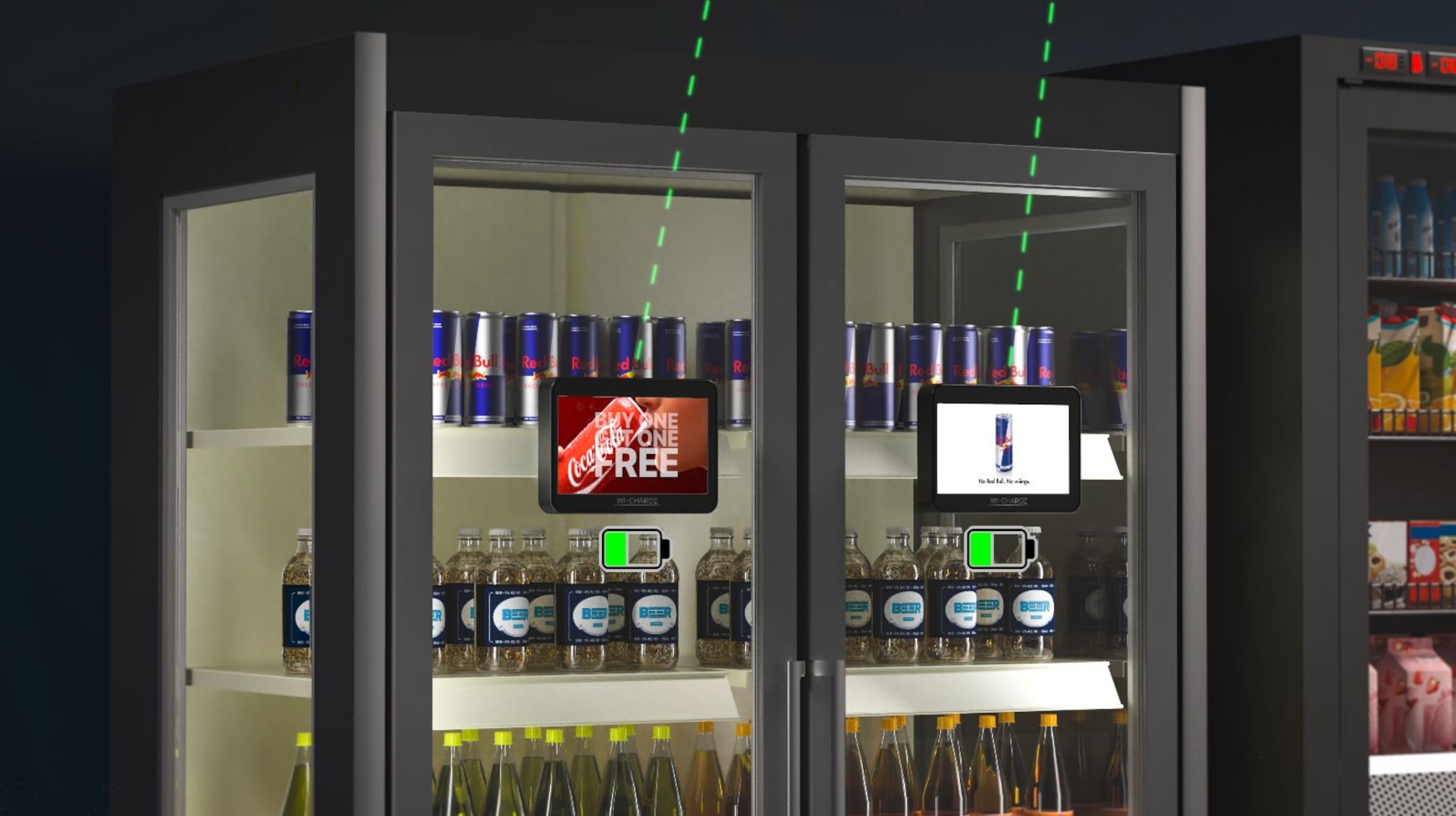Wireless power is a long-held dream in the digital signage and DooH industry. The Israeli start-up Wi-Charge has accepted the challenge and developed an infrared-based display solution called Wi-Spot. The shelf displays are up to 7″ in size and are operated completely independently of power cables. invidis spoke to CEO Ori Mor.
The challenge of power lines is particularly great for in-store retail media networks: supermarket shelves are generally not electrically powered. Integrators and shop fitters try to supply small shelf-edge displays with fiddly installations that are often not up to the challenge of everyday life.
The Israeli start-up Wi-Charge has taken on the topic of wireless power and developed solutions, particularly for B2B use. Billions of dollars have already been invested in B2B wireless charging in the tech industry. But to date, according to Wi-Charge CEO Ori Mor, there is only the Israeli provider with a commercially available solution.
Talking to invidis, the serial entrepreneur explained the long search for the right technology. Like most Israeli start-ups, Wi-Charge and its founders are closely linked to the Israeli military’s tech departments.
It quickly became clear to Wi-Charge that the only technical and regulatory approvable transmission technology would be infrared. The power is transmitted over a distance of up to 10m and is completely harmless to humans. But the technological building blocks for commercial implementation were missing. Ori Mor and his team then developed a robust solution – over 160 patents have been granted to date – that supplies toothbrushes, Xbox controllers or door locks with energy both in the B2B environment and at home.

Wireless powered – DooH and Retail Media Networks
Wi-Charge works simply – IR transmitters are integrated into the store ceiling like lights or clipped into existing light rails. Small 5-7″ shelf edge displays (soon also 10″) receive the necessary energy 24/7 via IR sensors, which is then stored in the integrated battery pack.
Additionally, motion detectors integrated into the displays ensure that the displays only play their content when customers are within the viewing area. This means that the Wi-Spot displays do not play in a continuous loop like in hardware stores, but only when the target group can see the display. Initial tests – including a German supermarket chain – were very successful. According to Wi-Charge, sales of the advertised products doubled.
In addition to presence, Wi-Spot 3.0 displays also capture a range of back-end data and analytics that provide retailers with key metrics on in-store screen performance, including the number of impressions per day, per aisle and per store. The easy installation – less than a minute according to Wi-Charge – allows retailers to install the displays where sales need to be pushed most.
Click on the button to load the content from www.podbean.com.
Operations designed for efficiency
The display control has been in development for a long time in Tel Aviv. An embedded OS, as is also common in IoT devices, minimizes power consumption together with the presence sensors. This meant that the average consumption of the displays could be reduced to milliwatt levels. (Background article) For content updates, the screen pings the CMS at regular intervals and downloads current content.
Also available for large format displays in the future?
Of course, in our conversation with Ori Mor we had to address the elephant in the room: will wireless power supply be available for large-format displays? The answer is sobering. According to Ori, technically it would be possible, but for the foreseeable future it is not economically feasible. Powering notebooks – thanks to integrated batteries – is currently the maximum.
So one thing remains – LFDs need to be connected by cables (for power and data supply)


